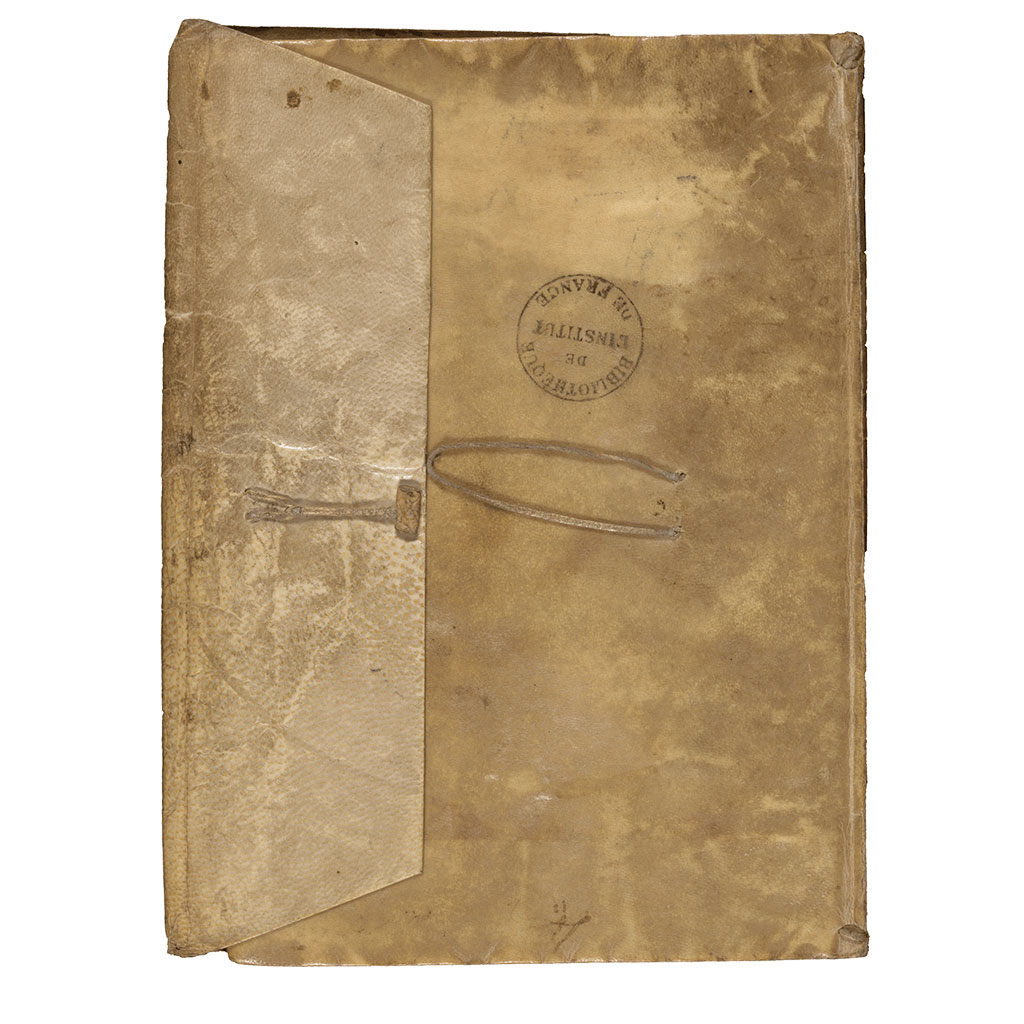The personal collection of thought of the great universal genius
The twelve Paris Notebooks by Leonardo Da Vinci
First volume of the new series Treasures of Knowledge
Five-hundred years after the death of one the greatest genii of all times, Faksimile Verlag initiates the publication of a unique testimony of Leonardo da Vinci’s creations and ideas: a total of 12 sketchbooks filled with his personal notes are kept today in the Institut de France and are going to be published over the upcoming years as true-to-original facsimile editions. The series starts with the book called „Manuscrit A“ and will allow you to immerse in the thoughts of this great Genius from the Times of the Renaissance.

Leonardo, born in 1452 the Italian town of Anchiano (Vinci)
Leonardo (1452–1519) was born in the Italian town of Anchiano (Vinci), where he got his name from, and started with his notes in the 1480s. Da Vinci wrote his texts in mirror writing, firstly because he was left-handed and thus wouldn’t smear the ink and secondly probably in order to keep his ideas a secret.
He filled more than 7,200 pages, which have been preserved to us in a compendium of 25 notebooks (codices). These books give an insight in the main subjects of Leonardo’s interest: the principles of physics and studies about flying, water, anatomy, arts, as well as several topics in the areas of mechanics, botany, geology, architecture and weapons technology.
Sigmund Freud wrote about him in 1910:
„He was like someone who had woken up in the darkness, while all the others were still asleep.”
The twelve Paris Notebooks by Leonardo Da Vinci
The personal collection of thought of the great universal genius
Twelve of a total of 25 notebooks have been preserved up to our days and are known as the Parisian Manuscripts, one of them being the „Manuscrit A“; they are today in the possession of the Institut de France and comprise a total of 1008 pages, which are now published by Faksimile Verlag, together with the two Ashburnham notebooks.
Twelve of a total of 25 notebooks have been preserved up to our days and are known as the Parisian Manuscripts, one of them being the „Manuscrit A“; they are today in the possession of the Institut de France and comprise a total of 1008 pages, which are now published by Faksimile Verlag, together with the two Ashburnham notebooks.
Manuscrit A – The first volume of the series
Leonardo used a scattered combination of notes and drawings to collect his thoughts on different subjects which mattered to him at a certain moment: he always used to carry around with him a notebook or some loose sheets of paper, where he would put down spontaneous impressions and thoughts, or would draw sketches of things he had seen or ideas on his mind. This is the reason why his notes don’t follow any order as to the treated topics.
Leonardo used a scattered combination of notes and drawings to collect his thoughts on different subjects which mattered to him at a certain moment: he always used to carry around with him a notebook or some loose sheets of paper, where he would put down spontaneous impressions and thoughts, or would draw sketches of things he had seen or ideas on his mind. This is the reason why his notes don’t follow any order as to the treated topics.
Leonardo was fascinated by the way how movement was able to change shapes, and this fascination caused him a special interest for water as the ideal element of „esperienza“ – for Leonardo a term which covered not only the meaning of „experience“, but also that of „experiment“.
The movement of water kept a special attraction for him: Leonardo used a total of 77 words to analyze and describe that movement. For Leonardo, „flowing water has per se infinite possibilities of movement“. The notes in Manuscrit A reflect the beginning of his studies about this element, which literally moves the world.
Leonardo’s way of questioning reflected the thinking of the Renaissance: the world was seen as the macrocosm, with the human being representing it as a microcosm. To understand all these connections was one of Leonardo’s main objective.
The Fine Art Facsimile Edition
Through his whole life, Leonardo always carried along a notebook with him in order to put down his ideas immediately. Now his twelve Paris notebooks, together with two supplements, are made available as perfect, true-to-original facsimile editions, limited to a number of 990 copies.
True-to-original facsimile editions of the manuscript in the possession of the Institut de France in Paris and limited worldwide to a number of 990 copies. A huge amount of sketches on 128 pages of 21.3 x 14.8 cm illustrate Leonardo’s ideas. The original binding of genuine parchment is going to be truly reproduced, and the precious edition will be presented in a beautiful box for its protection.
The scientific commentary volume, to be published in 2023, examines all aspects of the manuscript, traces back its exciting history and describes the main themes of Leonardo’s work. We are very excited to count on an excelling editorial team under the lead of Martin Kemp and Domenico Laurenza who are going to provide a formidable access of the partially very complex contents – written in ancient Italian and as previously mentioned, in mirror writing – by a modern translation of the content and an accessible explication of the main themes. Our endeavor is not only to preserve a piece of cultural heritage, publishing the facsimile of Da Vincis noteboks but also to make this formidable cultural treasure accessible to a wider public.
Manuscrit A
Signature Ms2172
Contenu : vers 1490. A moins de quarante ans, Léonard de Vinci y esquisse un Traité de la peinture.
Daté : 1490-1492
Reliure du Codex Ashburnham, complément du manuscrit A
MS2185
Daté : 1490-1492



